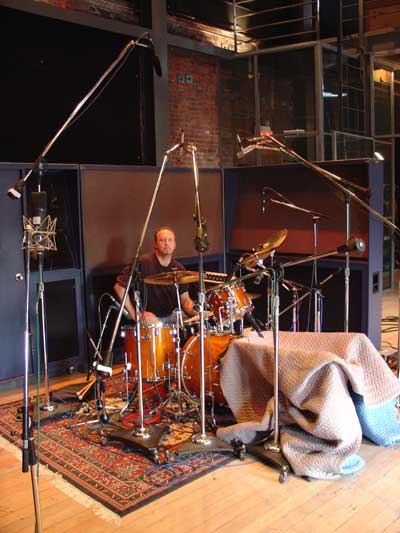Studio Drummer – A Jeff Porcaro Lesson
I had the opportunity years ago to meet Jeff Porcaro on a Toto show we were backing up. And let me say straight out, that this is not a self-stroke in any sense… It was a lesson to me.
A lesson in person-hood.
We were backing up Toto for a couple of shows…we met after our set in a quiet dressing room and he was as clear and real a human as a human could be. No hype, no bullshit at all.
We got talking and I was struck by some key things about him. He had a true humility and deference about him.. but at the same time he had a supreme quiet confidence about his truly massive strengths. Yet intuitively, he still had that honest self defacing attitude about what he perceived to be his weaknesses. “Ah my hands are weak man!” .. he said to me. And went on!
It was a bit weird to listen to because it was him…all the hits he’d played on that I’d grown up with and the beautiful deft subtleties (and strength of hands) of his playing. And yet he was more than happy to share the foibles LOL!
Like I said though, it was like… dude… ‘you played on much of the soundtrack of my life! There was a real disconnect there for me that I still understand to this day.
Yet at the same time he was genuinely complimentary and interested in my thoughts.. (you can spot the fakers.) He liked my playing and gave me the ultimate whole hearted compliment I’ve ever had as a player. Coming from him it still is very special.
the overall thing that struck me is this.
The people that contribute most to the art or instrument can often be the most humble of people. They would rather listen to another player and dig them ( and as a result glean from them). I read many an article of Jeff’s where he would defer anything he did to another great drummer, such as the Rosanna groove to Bernard Purdie. ‘ I borrowed this from this guy, this from that guy.’
Like another musical hero once said… “The more you do know about music, the more you realize you don’t know anything”.
There’s a good lesson in that.
Jeff was a great studio drummer and by all reports a very cool human too.. Listen to his Steely Dan tracks, Toto or anything Jay Graydon produced, Dire Straits, Michael Jackson, etc… on and on…he played on hundreds of hits.






